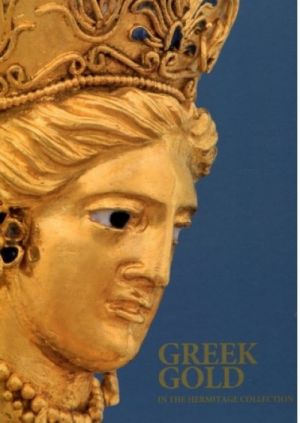The publication presents to the public works of antique jewellery, held in the Hermitage, which date from the 6th century BC to 3rd century AD and come from the northern shores of the Black Sea. Excavations in the region laid the foundation for Russian archeology and objects unearthed in their course formed the basis of the Hermitage archaeological collection.
Greeks who built cities in Bosporus two and a half millennia ago settled there next to barbarian tribes who had been living in the territory for ages and whose way of life was quite different. Their interaction resulted in a peculiar type of culture that took shape in the antique cities and had a great impact on the style of local artists. Features of this symbiosis are preserved in many works of jewellery, particularly those discovered in the tombs of prosperous citizens and aristocracy of the Kingdom of Bosporus and burial-mounds of tribe leaders who had adopted Greek tastes.
The publication includes magnificent examples of jewellery imported from Hellas, masterpieces made by the talented carver Dexamenos, active in Bosporus, items fashioned to imitate Greek originals, Scythian jewellery decorated in Greek style and finally genuine works of local goldsmiths. In them we seem to discern the movements of their owners' souls, their aesthetic and religious attitude to the world around them as well as superstitions. Without them the history or antique art would be incomplete.
The publication presents to the public works of antique jewellery, held in the Hermitage, which date from the 6th century BC to 3rd century AD and come from the northern shores of the Black Sea. Excavations in the region laid the foundation for Russian archeology and objects unearthed in their course formed the basis of the Hermitage archaeological collection.
Greeks who built cities in Bosporus two and a half millennia ago settled there next to barbarian tribes who had been living in the territory for ages and whose way of life was quite different. Their interaction resulted in a peculiar type of culture that took shape in the antique cities and had a great impact on the style of local artists. Features of this symbiosis are preserved in many works of jewellery, particularly those discovered in the tombs of prosperous citizens and aristocracy of the Kingdom of Bosporus and burial-mounds of tribe leaders who had adopted Greek tastes.
The publication includes magnificent examples of jewellery imported from Hellas, masterpieces made by the talented carver Dexamenos, active in Bosporus, items fashioned to imitate Greek originals, Scythian jewellery decorated in Greek style and finally genuine works of local goldsmiths. In them we seem to discern the movements of their owners' souls, their aesthetic and religious attitude to the world around them as well as superstitions. Without them the history or antique art would be incomplete.













